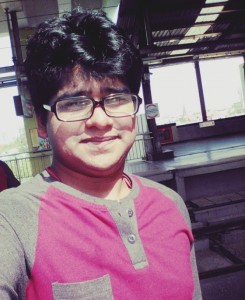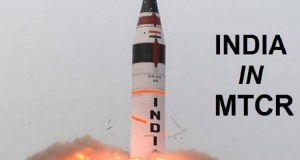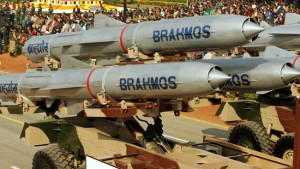In this blog post, Pranav Rudresh, a student of Lloyd Law College, Greater Noida, and currently pursuing a Diploma in Entrepreneurship Administration and Business Laws by NUJS, Kolkata writes about India’s recent inclusion in the MTCR group of nations and the bright prospects it brings.
Introduction
It was in the news for a long time recently that India failed to make it to the NSG (Nuclear Suppliers group) as China blocked India’s way by using its Veto power. However, Indians had something to feel proud of as India successfully entered the MTCR (Missile Technology Control Regime) group of nations of which even China is not a part; with primary support from USA, France, and other powerful nations. Now the important questions are, what advantages will India have after being a permanent member of MTCR and will it help India grow into a super power?
Let’s start explaining what MTCR is. MTCR stands for Missile Technology Control Regime. It was established in the year 1987 by the G7 nations namely The United States of America, Great Britain, Japan, Germany, Italy, Canada, and France. MTCR is a voluntary association of nations which aims to check the proliferation of nuclear missile and UAV (Unmanned aerial vehicle) such as drones capable of carrying mass destruction weapons. To speak more precisely, MTCR is one of the 4 global nuclear proliferation groups[1] to check the transfer of nuclear missiles and UAVs capable of carrying a payload of 500 kg weight and 300 km range.
To join MTCR, India had put its official application in 2015 which was then blocked by Italy, the reason being the arrest of two Italy fishermen. With the Indian government releasing the fishermen back to Italy, India’s path to joining MTCR was clear. It was on 27th June 2016 that the Ministry of External Affairs announced that India had joined the MTCR as the 35th member. It is interesting to note that China is not a part of MTCR and has been trying to be for a very long time. With New Delhi joining the club ahead of Beijing, it surely gives India an upper hand over China while it also gives an opportunity to India to bid more confidently for the NSG group.
Let us now try to understand what other significant advantages India will have, being a member of the MTCR. So far India was not able to buy high-end missile technology from Russia or any other powerful nation. India’s bid to buy a cryogenic engine from Russia during Cold War had failed as India was not considered qualified for this group. With the permanent seat in MTCR, India’s bid to develop cryogenic engine will progress and India can enhance its space exploration abilities. Also, India will now have the license to sell the BrahMos[2] Missile to Vietnam, who has shown a keen interest in buying it.
Let’s take a look at few other interesting points about India’s entry in MTCR.
-
Access to high-end missile and drone technology:
With an entry in MTCR, India will now have access to high-end missile technology. With increasing threats like cross-border terrorism and rising tensions on international borders with nuclear-powered nations like China, Pakistan, etc., India aims to increase its Ballistic Missile Defence System[3]. It will also enable India to buy drone technology and the UAVs which is being considered of high importance for border surveys and tactical terrorism operation. India is willing to buy at least 40 drones, which include high-end tech drones such as Global Hawk from the USA at the earliest. The USA drones became famous after their successful anti-terrorist operations in Iraq and Afghanistan. The drone technology is being considered of real importance for India to make it future ready.
-
Boost to “Make in India” campaign and foreign policies of India:
India’s inclusion in the MTCR is also a big boost for Prime Minister Narendra Modi’s ambitious “Make in India” project as the technology made in India under the campaign could be shared with other nations in the future. India’s MTCR aims will also include improvement of foreign policies, especially towards the People Republic of China which has been standing as an obstacle; blocking India’s entry in the 48 member proliferation group named NSG. China’s application in MTCR is still pending, and India faces the same case in NSG. With the permanent seat in MTCR, India can negotiate with China over this issue.
-
Export of missile technology:
India and Vietnam have been discussing the trade of world’s fastest supersonic cruise missile which has been developed by a joint venture of India and Russia named the BrahMos. Apart from Vietnam, many other nations such as Australia, South Africa, etc. have shown interest in buying this missile technology from India. For Vietnam, BrahMos can be a great asset as Vietnam has been continuously involved in a war with China over the issue of the South China Sea. MTCR now allows India to adopt a set of international level practice to share this technology capable of mass destruction. The export of this missile is, however, a matter of discussion as the range of BrahMos is reportedly just a touch lower than that required under trade policies of the MTCR. Although if India can transfer this technology to other nations, this might be a big boost to India’s financial and foreign trade policies.. However, at the same time, India needs to be careful about the Indo-Sino or Indo-Russia relations.
Conclusion
India has been looking for a permanent seat in many global nuclear proliferation organizations such as the NSG, the MTCR and so on. India was recently denied the NSG seat due to China and several other countries who believe that India doesn’t deserve to be a part of NSG as it has not signed the NPT (Nuclear Non-Proliferation Treaty)[4]. The news of India’s inclusion in the MTCR, however, brings relaxation for us as we have been trying hard for it for a very long time. It also now gives India a chance to negotiate its deal with China upon the seat in NSG as China’s application in the MTCR is still pending. Let’s just hope that the MTCR seat brings some real bright prospects for India and helps it grow as a super power in the coming future.
Footnotes:
[1] Other 3 global nuclear proliferation groups are namely the NSG (Nuclear Suppliers group), the Wassenaar arrangement and the Australian group
[2] BrahMos is a supersonic cruise missile developed under joint India-Russia venture.
[3] The Ballistic Missile Defence system is developed under the Ballistic Missile Defence program which aims to make missile technology for Indian army. The DRDO has developed missiles such as Agni, Prithvi, Trishul, etc. under this program.
[4] See: https://www.iaea.org/publications/documents/treaties/npt for details.














